Restoring Habitats in The Medlock Valley

Background
Groundwork Greater Manchester are working with The Conservation Volunteers, City of Trees, Mersey Rivers Trust, Canal and Rivers Trust and alongside Manchester, Oldham and Tameside council to deliver the Medlock Valley Restoration Project.
Funded by the UK Government’s Species Survival Fund, the aim of the project is to halt the decline of important species like Bats, Water Voles, Willow Tits, Great Crested Newts and Waxcap fungi by improving vital habitats along the River Medlock. We’ll be working alongside local communities in Manchester, Oldham and Tameside, giving them the opportunity to be involved in practical conservation work and learn all about the species we’re working to protect.
Why are Riparian Habitats important?
The Riparian Zone is made up of the habitats on the banks of our rivers, which play an equally important role in the water ecosystem. Our native woodlands provide shelter to regulate the temperature of the river, and tree roots can provide structure to the river bank, helping prevent erosion. While falling leaves and deadwood provide shelter for the insects that many species living in and along the river feed on.
Having a diverse range of healthy habitats along our rivers also creates wildlife corridors, allowing species like Kingfishers, Bats and Otters to move freely through our towns and cities.
In the River Medlock Valley, we’re working to restore woodland, wet woodland and grassland habitats across Manchester, Oldham and Tameside by;
- Diversifying the ages and species of trees in woodlands to improve biodiversity
- Cutting back dominant plant species covering grassland and meadow habitats
- Removing invasive non-native species
- Improving accessibility across all sites
Manchester
City of Trees have been working with volunteer groups at Bank Bridge Meadow to remove Dogwood, a native species which has been spreading and covering the meadow habitat. By opening up the space, we’re giving the grassland habitat a chance to be restored and welcome a variety of meadow species back to the site. Volunteers have also been creating habitat piles with the cut Dogwood to provide shelter for hibernating species over the Winter.
Working alongside City of Trees, Groundwork’s Trainee Rangers have been opening up other areas of the Meadow by cutting back the Bramble, and by treating Japanese Knotweed in hopes of permanently eradicating it from the site.
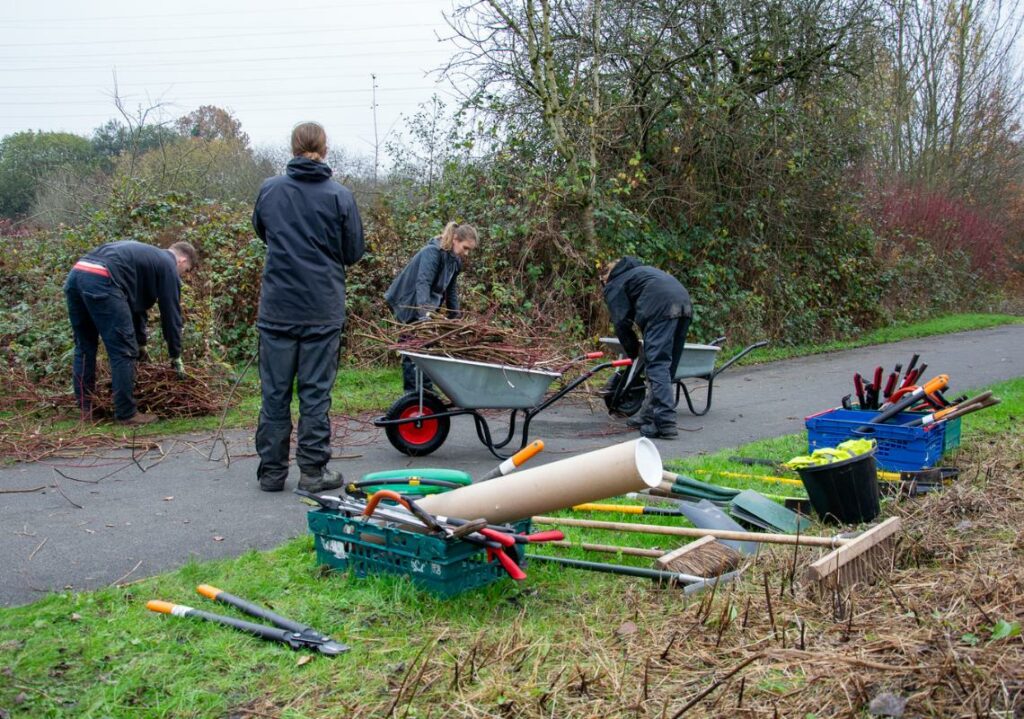

The Trainee Rangers received their brush cutter qualification in September and have since been opening up the meadow habitat at Millstream Open Space by cutting back the overgrown plants.
Prior to their work, the site was completely inaccessible and overgrown. Opening up the space will hopefully allow a variety of plants to grow and improve biodiversity on the site. We also aim to make the site more accessible so the project teams can bring in volunteers in the near future to help with the restoration works.
Oldham
In the Summer, Groundwork invited local volunteers to help us remove Himalayan Balsam, an invasive non-native plant species, from alongside the Brook. Removing the plant before it flowers stops the seed pods from bursting and spreading hundreds of seeds into and alongside the Brook.
Over the Winter months, we will be working with volunteers on a monthly basis to clear and maintain the network of footpaths and steps around the site to improve accessibility.
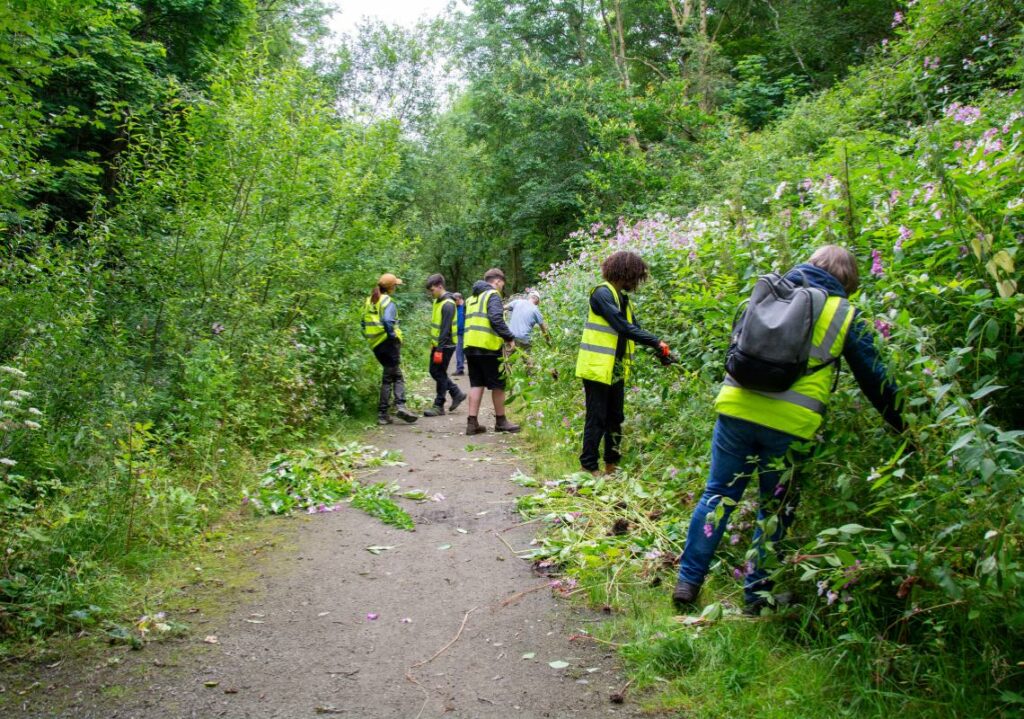
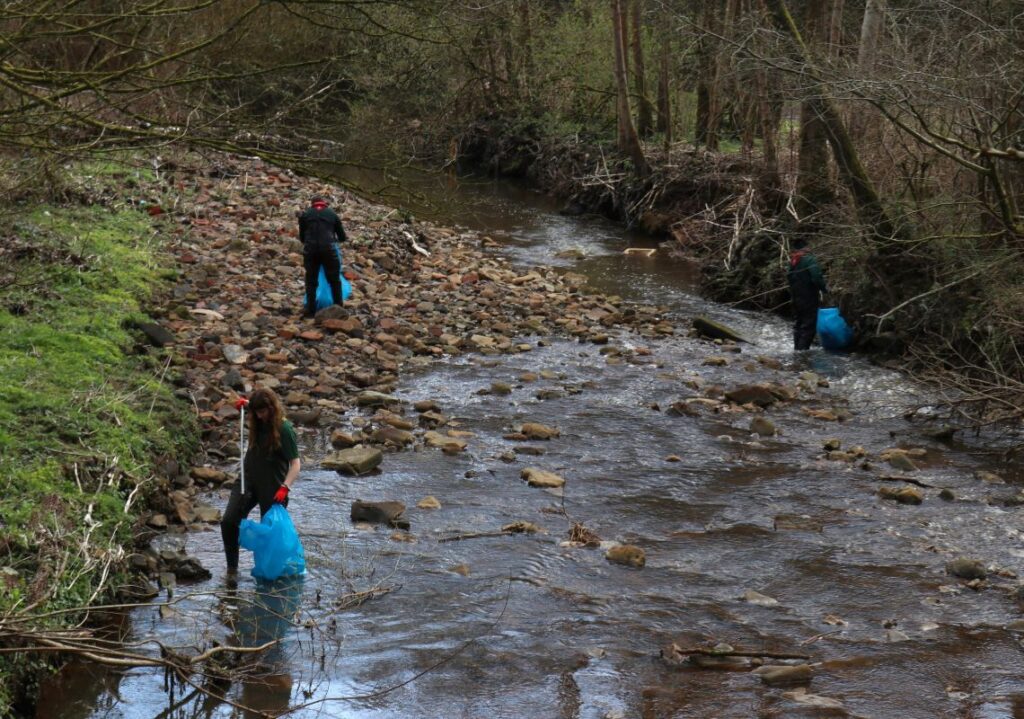
Groundwork have been working with volunteers across the Medlock Valley, clearing up local waterways as part of the Great British Spring Clean. Our team were joined at Daisy Nook Country Park by the Friends of Daisy Nook group and United Utilities River Rangers, who collected over 30 bags of rubbish in just a few hours.
Together, they uncovered a variety of discarded items, from pieces of furniture to wet wipes. Clearing these items from the river will aid the re-establishment of these vital habitats, protecting local wildlife.
Tameside
Over the Winter, the Canal & River Trust have been working with volunteers to improve the habitats along Ashton Canal. These activities range from scrub clearance and woodland management to invasive species removal.
This work ensures that local waterways are more clear for wildlife and less likely to spread invasive species, such as Himalayan Balsam. Cutting back the brambles also makes the area more accessible, encouraging local people to explore the waterways.

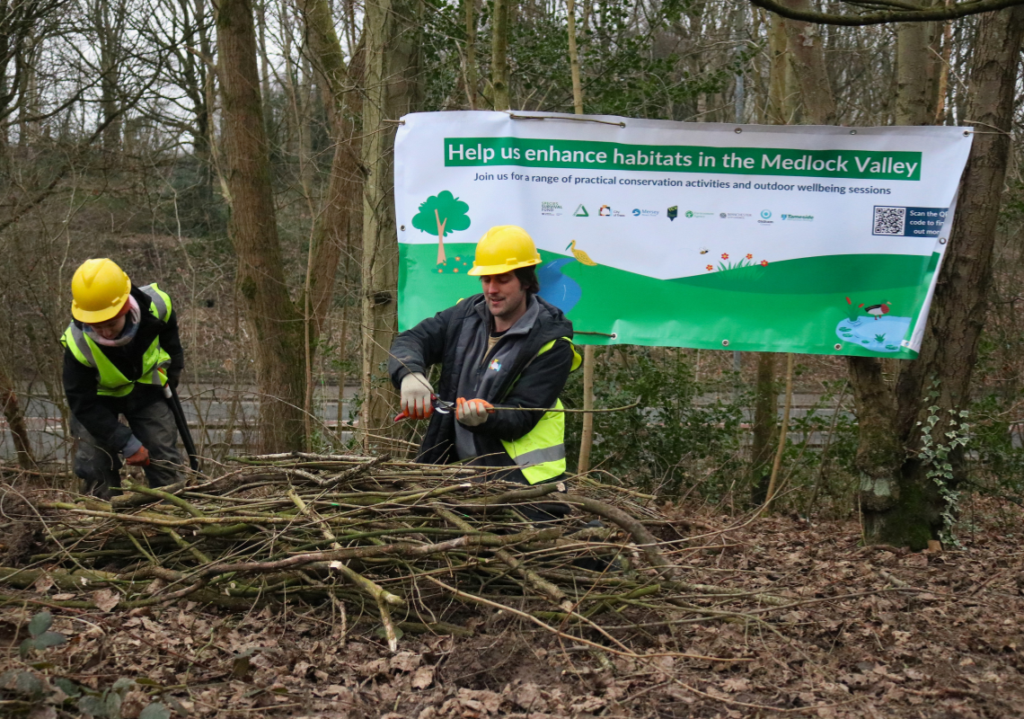
City of Trees and local volunteers have been busy at Sunnybank Vale, with the woodland undergoing targeted management to boost biodiversity, support native species, and improve public access. The team has selectively thinned non-native species such as Sycamore and Norway Maple, alongside overabundant native species like Ash, Alder, Hazel, Hawthorn, and Willow, to create space for scarcer trees like Oak to thrive. They’ve also been using these thinned trees to create habitat piles.
To further support biodiversity, future plans include creating specialized habitats for Willow Tits by attaching rotting branches to trees, litter cleanups to discourage fly tipping, and wildflower plugs and seeds will also be planted in selected areas to encourage ground flora to establish and spread naturally over time.
Groundwork worked with the Friends of Sunnybank Vale group to create a wetland area near the pond. We dug a trench in an already boggy area and lined it so it could collect water. This will fill with water in times of heavy rainfall and likely dry out in dry months, creating a great seasonal pond/wetland habitat.
With some of the remaining turf, we created a hibernation area for local wildlife. We also added some marginal plants in the main pond such as marsh marigold and purple loosestrife to stabilise the wetland and prevent erosion.
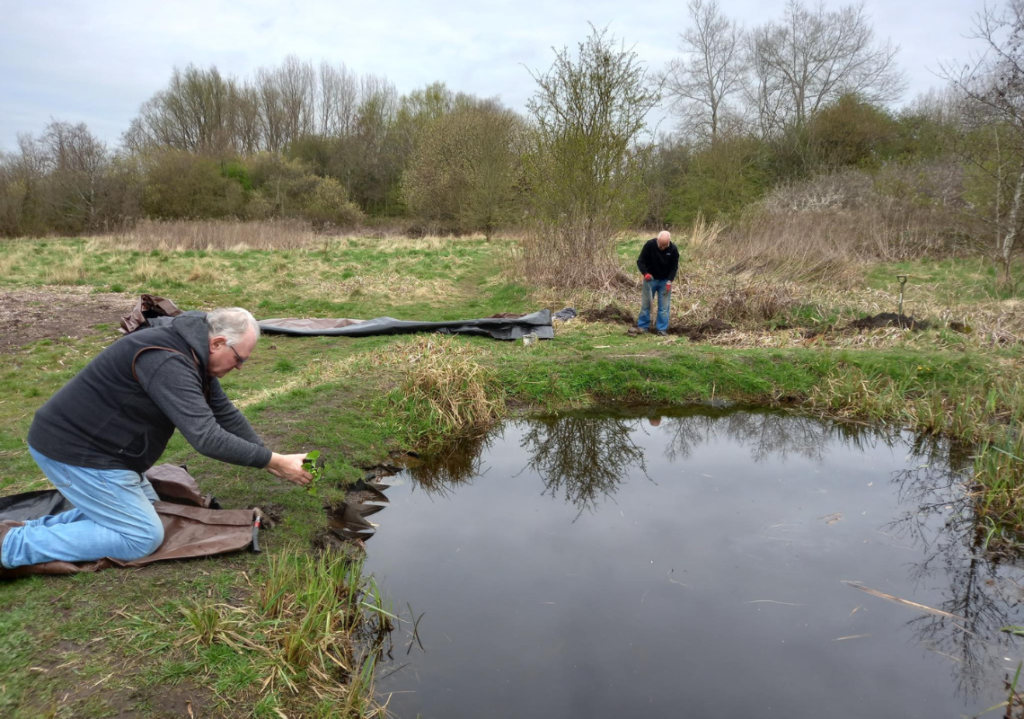
What else are we doing?
Project partners are also delivering a programme of green skills training to equip people with the necessary knowledge and skills to facilitate climate action and upskill the workforce. We’re also running a programme of activities and events to connect people, community groups, businesses and schools with the nature on their doorstep.
This project has been made possible thanks to funding from the UK Government’s Species Survival Fund.

